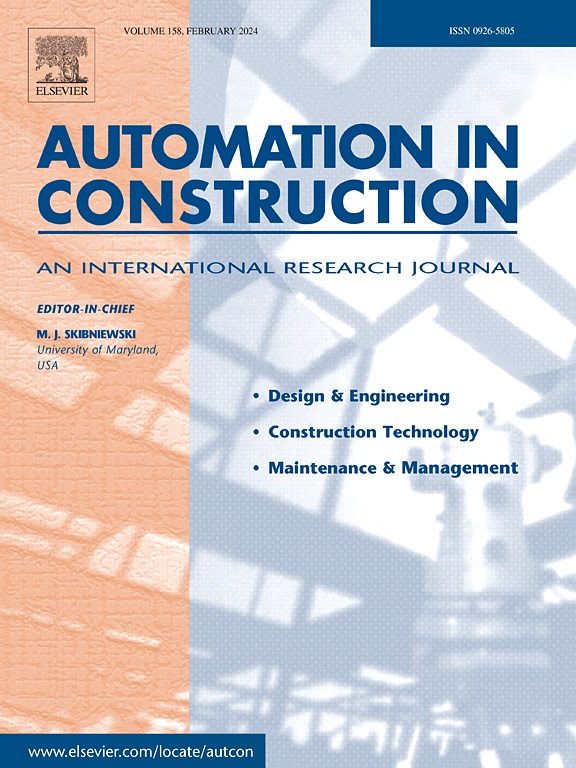从建筑平面图自动生成HVAC管道布局
IF 11.5
1区 工程技术
Q1 CONSTRUCTION & BUILDING TECHNOLOGY
引用次数: 0
摘要
暖通空调水管系统的设计通常是复杂的,耗时的,并且依赖于人工的努力。本文研究了自动化方法是否可以生成满足功能、水力和空间要求的管道布局。该方法采用基于逃逸图的空间建模和多智能体蚁群算法,在避开障碍物的同时优化管道长度和局部阻力元件数量,然后对管道和阀门进行尺寸调整和水力平衡,以确保系统性能。结果表明,该方法能够自动生成可行、高效的布局,大大减少了设计时间和人工工作量。这些发现突出了自动化在提高复杂环境中暖通空调管道设计的效率和质量方面的潜力。未来的工作将集中在细化适应度函数,将液压约束嵌入到优化过程中,并与人工设计的系统进行直接比较。本文章由计算机程序翻译,如有差异,请以英文原文为准。
Automated layout generation of HVAC piping from building floor plans
The design of HVAC water piping systems is often complex, time-consuming, and reliant on manual efforts. This paper investigates whether an automated method can generate pipeline layouts that meet functional, hydraulic, and spatial requirements. The proposed method applies an escape graph-based spatial modeling and a multi-agent ant colony algorithm to optimize pipe length and the number of local resistance components while avoiding obstacles, followed by pipe and valve sizing and hydraulic balancing to ensure system performance. Results show that the method can automatically produce feasible and efficient layouts while significantly reducing design time and manual workload. These findings highlight the potential of automation to improve both efficiency and quality of HVAC piping design in complex environments. Future work will focus on refining the fitness function, embedding hydraulic constraints into the optimization process, and enabling direct comparison with manually designed systems.
求助全文
通过发布文献求助,成功后即可免费获取论文全文。
去求助
来源期刊

Automation in Construction
工程技术-工程:土木
CiteScore
19.20
自引率
16.50%
发文量
563
审稿时长
8.5 months
期刊介绍:
Automation in Construction is an international journal that focuses on publishing original research papers related to the use of Information Technologies in various aspects of the construction industry. The journal covers topics such as design, engineering, construction technologies, and the maintenance and management of constructed facilities.
The scope of Automation in Construction is extensive and covers all stages of the construction life cycle. This includes initial planning and design, construction of the facility, operation and maintenance, as well as the eventual dismantling and recycling of buildings and engineering structures.
 求助内容:
求助内容: 应助结果提醒方式:
应助结果提醒方式:


